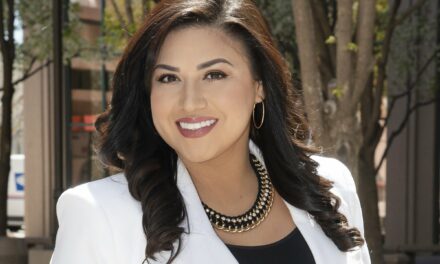LOS LUNAS — There has been no official action yet by the Los Lunas Board of Education, but it’s likely that Los Lunas Schools will begin the second semester in a remote-learning model due to the rise in COVID-19 cases in Valencia County and throughout the state.
The board will have to make a decision at its next board meeting on Dec. 8.
“There’s probably a 100 percent chance that we start the second semester remote,” acting superintendent Walter Gibson said. “Now, I said start. We’d love to get out of that, but I just don’t see that happening.”
Valencia County is currently in the red zone for test positivity rate and cases at more than 8 per 100,000, the threshold for a green county. Currently, the test positivity in the county rate is at 11 percent — above the 5 percent limit — and is averaging about 41 cases per 100,000, according to the state’s latest data. The county saw a high in COVID-19 cases last Friday, Nov. 20, when 169 cases were reported.
The New Mexico Public Education Department has recommended that district counties be in the green zone to be eligible to return to hybrid learning.
Gibson mentioned bigger school districts, such as Santa Fe and Rio Rancho, switching back to remote from a hybrid-learning situation. He also mentioned Albuquerque Public Schools’ decision on beginning next semester in remote learning.
Los Lunas Board of Education President Bryan Smith said before the recent surge, he thought the district would be talking about in-person learning come next semester.
“Two weeks ago, you asked me and I thought we were on track to see the classroom soon, which is the ultimate goal and which is definitely what I want,” Smith said. “This is a conversation we need to have about the second semester very soon, and possibly before the December meeting we may need to come together and say that.”
Gibson said at some point next semester, it is likely that the county reaches the green zone, which would allow the district to move forward with hybrid learning, but that it can quickly enter the red zone, too. He doesn’t want the district to switch back and forth with learning models because it can confuse kids and make it harder on educators.
However, there is a caveat for next semester — and in particular, relating to in-person learning for special education students in the district. Gibson said it’s his goal to get them back in the classroom in a 5:1 ratio, particularly those who are high-risk learners.
Gibson heard from parents who are concerned about students maybe not getting the help they need in a remote-learning model.
“We will try to bring in our highest-risk special education kids 5:1 — one teacher to five kids. So when we reach that point, I will recommend to the board that, and I’ll probably recommend that to them fairly soon as we talk about the second semester,” Gibson said. “But I will recommend to them that they bring high risk special education kids back.”
Getting students on track
Gibson said there is concern for high school students — especially seniors — not having enough credits to graduate. He said the district has used a site called Apex Learning to help students get on track.
Students can get a course — and earn a credit — in just eight to 10 weeks, he said. Because the district can’t meet face-to-face with kids, counselors and other staff have been reaching out as much as possible to keep students on track.
“Counselors are on top of that. They’re working with kids,” Gibson said. “If [students] were in front of us day after day, there would be a list of those kids — a risk list. And you would be able to reinforce that every day. The counselors would be calling them in and saying, ‘you know, how you doing? You need to pass this course.’ But they’re not there [so it makes it harder].”
There has also been an issue with attendance. Some students log on for a class in the morning, but then don’t attend a class later in the afternoon, Gibson said. The district, for next semester, is looking at downsizing core classes in remote learning to make the learning process smoother for students.
“We have been making some adjustments because of issues that have arisen from remote learning,” Gibson said. “The longer students are in remote learning, the more difficult it is to keep them attentive.
“Beginning second semester, if we stay in remote learning, we will be making some changes to the high school schedule to try and eliminate the very large groups we’ve had.”
Smith said this pandemic has been hard on students, but he knows “they are doing the best they can.”
Gibson said the job of the district is to see where students are at in the learning process, and he’s been meeting weekly with staff from elementary schools and middle schools and students from high schools to see how remote learning can be improved.
“I mean, I think the only consensus that we had about that is when we do come back to full-time learning, we really need to measure where kids are, and then assign them where they need to be, which will probably require us to do some real serious differentiation,” Gibson said.
















